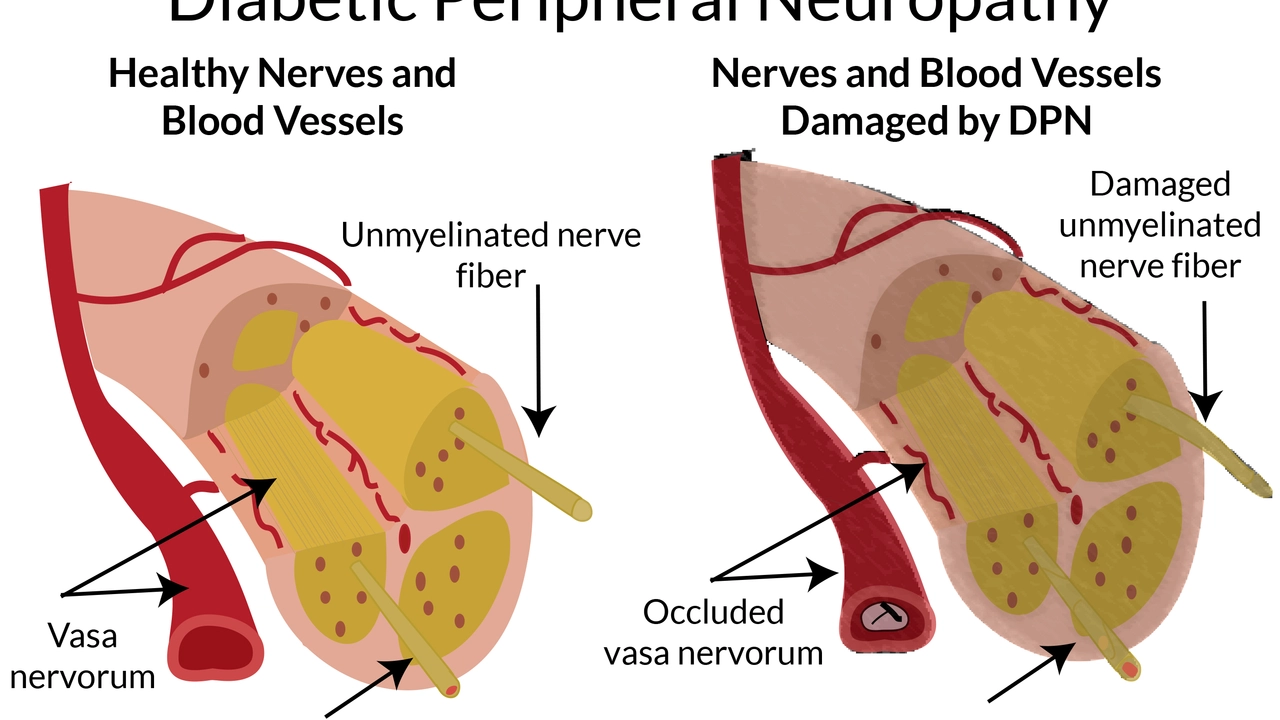Diabetic Peripheral Neuropathy: What It Feels Like and What You Can Do
Up to half of people with diabetes develop some nerve damage over time. If your feet or hands feel numb, tingly, burning, or painfully sensitive, that could be diabetic peripheral neuropathy (DPN). You don’t have to accept the pain as "just part of diabetes." There are clear steps that help most people feel better and protect their feet.
How DPN shows up
Symptoms usually start in the toes and move up the feet and legs. Common signs:
- Numbness or reduced feeling in the toes and feet
- Sharp, burning, or electric-like pain—often worse at night
- Heightened sensitivity to light touch (even sheets can hurt)
- Loss of balance or coordination
- Sores or ulcers that don’t heal because you can’t feel them
If you notice these, get checked. Early changes are easier to manage.
What works: tests, treatments and daily care
Diagnosis starts with a physical exam and questions about your symptoms. Your doctor may test reflexes, vibration sense, and touch. Blood tests and medication reviews help rule out other causes.
Treatment focuses on two things: controlling the nerve damage and easing pain. Tight blood sugar control slows progression. For nerve pain, common medicines include duloxetine and pregabalin or gabapentin; several of these have generic versions. Topical options like capsaicin cream or lidocaine patches can help if you prefer to avoid pills. Tricyclic antidepressants are another option but need monitoring for side effects.
Non-drug approaches matter a lot: regular low-impact exercise, weight management, quitting smoking, and limiting alcohol can reduce symptoms. Physical therapy and simple stretches improve balance and reduce falls.
Foot care is vital. Check your feet every day for blisters, cuts, or redness. Wear well-fitting shoes and never walk barefoot. See a podiatrist for calluses or persistent problems—small issues can quickly become infections if you can’t feel them.
Watch for warning signs that need urgent care: infected wounds, spreading redness, fever, or sudden severe pain. Those need prompt medical attention to avoid complications like deep infection.
A quick tip on meds: ask your doctor about generic versions and drug interactions, especially if you take multiple medicines. Managing sleep and mood often improves how you cope with chronic nerve pain, so talk about cognitive-behavioral therapy or sleep support if pain disrupts sleep.
If you have new numbness, worsening pain, or any foot sores, call your healthcare provider. With the right mix of blood sugar control, medicines, self-care, and professional support, most people can reduce pain and protect their feet for years to come.
The Importance of Regular Checkups for Diabetic Peripheral Neuropathy Patients

In my latest blog post, I delve into the necessity for regular checkups for patients suffering from Diabetic Peripheral Neuropathy (DPN). Continuous monitoring is crucial for managing DPN, as it can help detect any changes or progress in the condition early. These checkups often involve a thorough examination of the patient's feet for ulcers, infections, or deformities. Regular appointments with healthcare professionals also provide an opportunity for patients to gain more knowledge about their condition and discuss any concerns. Overall, frequent checkups not only manage DPN effectively but also improve the quality of life for these patients.
- July 16 2023
- Tony Newman
- 11 Comments
